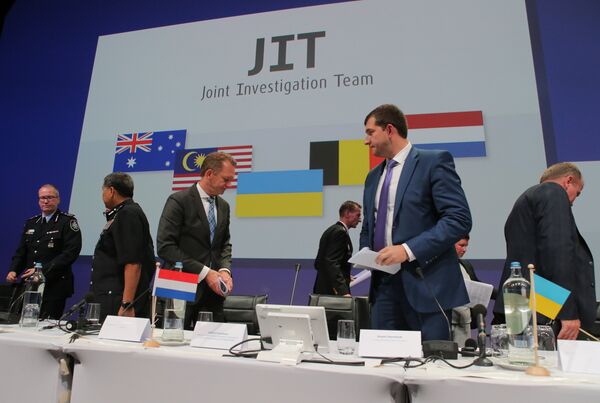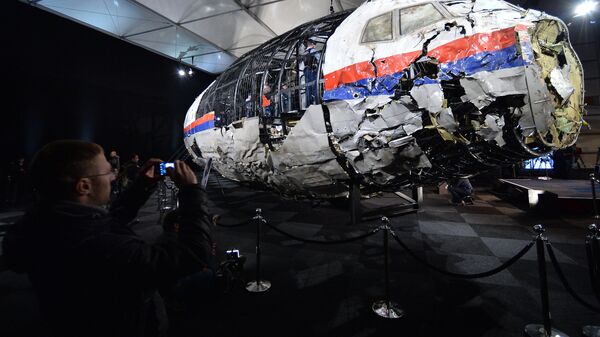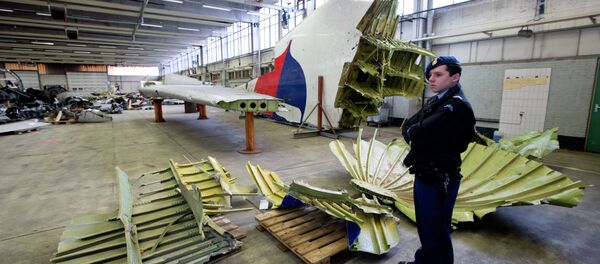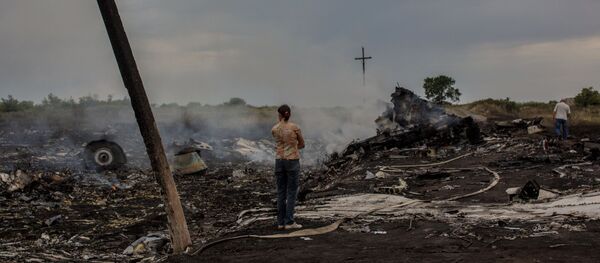His remarks came after the JIT made public a report on the details of the Malaysia Airlines MH17 plane crash in Ukraine in 2014, according to which it was downed by a Buk missile system which was allegedly brought from Russia.
Flight MH17 crashed with 298 people on board on July 17, 2014 in eastern Ukraine, while en route to Kuala Lumpur from Amsterdam, leaving no survivors.

Kiev and independence supporters in Ukraine's southeast blamed each other for the downing of the plane.
According to Ardayev, the JIT "predictably came to the conclusion" that the plane was downed by a 9М38 missile launched from a Buk system, which was brought from Russia and later returned there, near the settlement of Pervomayskoe, which is controlled by Donbass militias.
Importantly, Ardayev recalled, JIT chief and Dutch prosecutor Fred Westerbeke declined to formally link the crash to Russia or Russian nationals.
Ardayev, for his part, noted that the results of the probe, in fact, repeat allegations by the international expert and journalist group Bellingcat, which launched its own informal investigation into the MH17 crash and which used social networks data and eyewitness testimony as evidence.
"The JIT preferred not to pay attention to the arguments of the Russian side, including a detailed report provided by experts from the arms manufacturer Almaz-Antey and data provided by the Russian Defense Ministry", he said.
Ardayev quoted Almaz-Antey spokesman Mikhail Malyshevsky as saying that the JIT findings contain no references to the technical aspects of the investigation and are therefore "not quite right."
According to Malyshevsky, a meticulous study of the technical details of the disaster casts doubts on the results of the international investigation into the MH17 crash.
"We used a powerful experimental base to conduct our own probe with the help of virtual and real tests on the ground, something that fully shattered JIT allegations," he said.
Ardayev recalled that Almaz-Antey experts concluded during such tests that the MH17 plane could only have been shot down by a 9M38 missile launched from a Buk system. These missiles haven't been produced or used in Russia in a long time, but remain in service in Ukraine.
In addition, the nature of the plane's damage indicates that the real position of the angle at which the missile reached the aircraft differs from the one noted by international experts, according to Ardayev.
"And this, in turn, confirms that the missile was launched from an entirely different point, namely from the area near the village of Zaroshchenskoye, which was controlled by Ukrainian armed forces at the time," he said.
He was echoed by RT correspondent Murad Gazdiyev, who quoted Almaz-Antey experts as saying that it was the shape of the missile's fragments which helped the experts finally establish the type of the missile itself.
Ardayev said, for his part, that the primary radar data also confirm that JIT investigators failed to calculate the real trajectory of the missile that hit the MH17 plane.
"Radars did not track the missile, which means that it was flying from territory which was not mentioned by the JIT report," Ardayev quoted Viktor Meshcheryakov, chief designer of the Utes-T radar system, as saying.
Michael Malyshevsky in turn confirmed that Almaz-Antey had repeatedly handed over the results of its probe to international experts, who claimed that they allegedly received it a couple of weeks ago and have yet to study tem thoroughly.
Meanwhile, Russian Defense Ministry spokesman Maj. Gen. Igor Konashenkov has expressed doubt about the impartiality of the data provided by the investigators of the MH17 crash and the conclusions made on the basis of this data.
The official added that no Russian missile systems, including Buk, have ever crossed the Russian-Ukrainian border.
Earlier, the Russian Foreign Ministry said that Russia was disappointed regarding the investigation of the airliner's crash.





